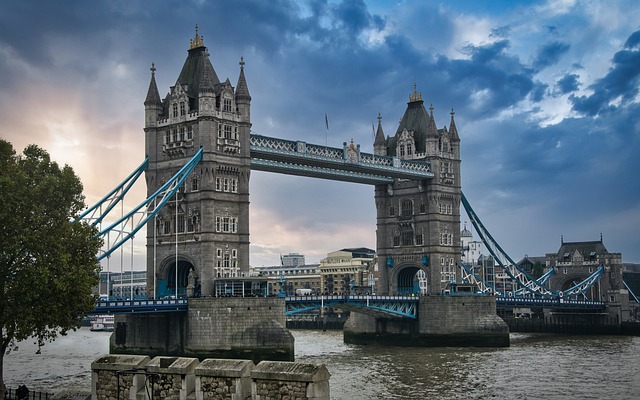Santorini, the quintessential Greek island that you must visit, is known for its stunning views, dreamy sunsets, and fairy-tale-like architecture. This paradise in the Aegean Sea not only offers natural beauty but also a rich history and culture that make it an unmissable destination. Here, we tell you everything you need to know about Santorini and provide some useful tips for planning your next dream trip.
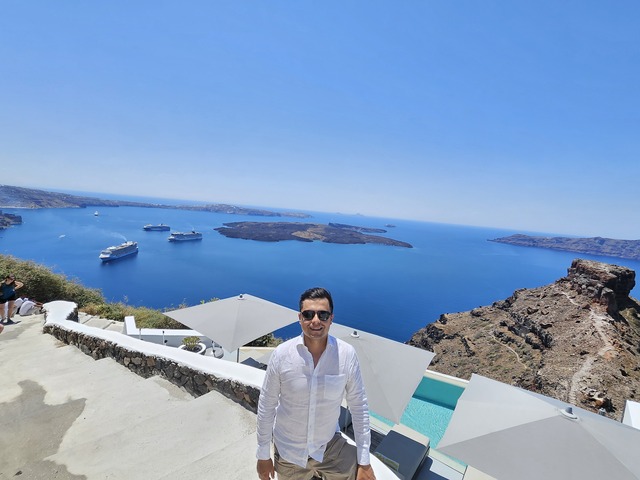
Location and how to get to Santorini?
Santorini is part of the Cyclades group of islands in Greece. You can reach the island by plane, with direct flights from Athens, where you will find daily flights to the island from the early hours of the morning, taking only 45 minutes to reach this wonderful island. You can also arrive by ferry from the port of Piraeus in Athens and other nearby islands such as Mykonos.
Acommodation in santorini- Where to Stay?
This is perhaps one of the most common questions for all those who wish to visit the island, so here we provide the most representative features of each area in Santorini, each offering a variety of accommodation options to fit your budget:
- Oia: Known for its iconic sunsets and white houses with blue roofs, it is the perfect place for a romantic stay.
- Fira: The island’s capital offers a vibrant nightlife, shops, and restaurants with impressive sea views.
- Imerovigli: Known as the “Balcony of the Caldera,” it is ideal for those seeking tranquility and panoramic views.
- Kamari and Perissa: These areas are perfect for beach lovers, with beachfront hotels and a more relaxed atmosphere.
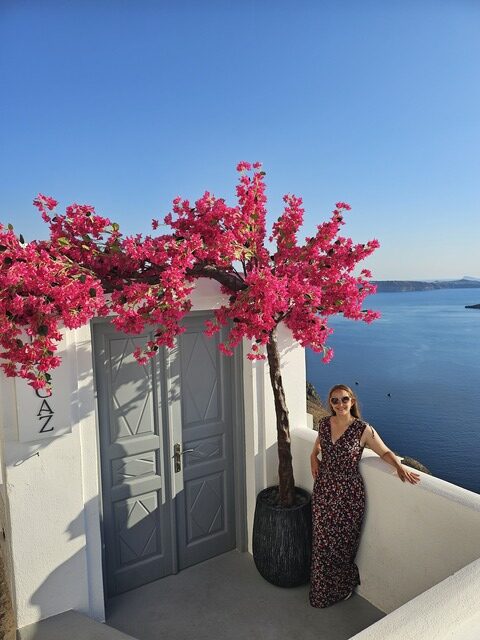
How to Get Around?
The best way to explore Santorini is by renting a car, motorbike, or quad. There are also local buses connecting the island’s main points of interest. You can rent a car once you arrive at Santorini airport, or if you prefer, you can rent one in any area of Santorini. In our case, we were staying in Kamari and found a variety of places to rent vehicles, with rental costs around 40 euros per 24 hours, including full insurance. Renting a car offers many advantages because you can explore every corner of Santorini at your own pace and with total freedom.
Gastronomy of Santorini
Santorini’s gastronomy reflects its rich cultural and geographical heritage. Don’t miss:
- Tomatokeftedes: Tomato fritters, a local specialty.
- Fava: A yellow split pea puree, typical of the island.
- Fresh seafood: Try the fresh fish and seafood at seaside restaurants.
- Local wines: Santorini is famous for its white Assyrtiko wine. Visit some local wineries for a tasting.
History and Culture of Santorini
Santorini has a fascinating history dating back to the Minoan civilization. The volcanic eruption that created the caldera also buried the city of Akrotiri, preserving it under ash. Today, this ancient city offers a window into life thousands of years ago.
Activities and Places of Interest in Santorini
Explore Oia in Santorini
Oia is one of the most iconic places in Santorini. Its cobbled streets, white houses with blue roofs, and panoramic views of the Aegean Sea make this village a magical place. Here, you can:
- Visit shops and boutiques: Oia is full of small craft shops, art galleries, and clothing boutiques, perfect for buying unique souvenirs.
- Admire the views from the terraces: Many cafes and restaurants in Oia have terraces with stunning views. It’s an ideal place to enjoy a meal while taking in the scenery.
- Sunset at Oia Castle: One of the most popular spots to watch the sunset in Santorini. Arrive early to secure a good spot, as it gets crowded.
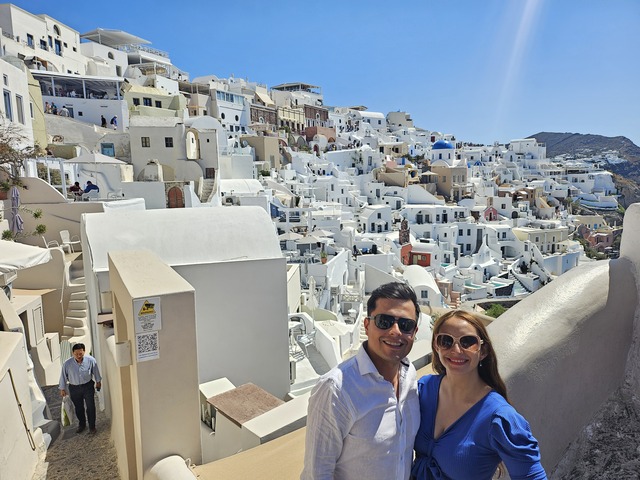
Caldera and Volcano of Santorini
The caldera of Santorini is an impressive natural spectacle, the result of a massive volcanic eruption thousands of years ago. You can:
- Take a boat excursion: Many boat tours will take you through the caldera and allow you to swim in the hot springs near the volcano.
- Climb the volcano: Hike to the crater of the active volcano Nea Kameni. The trail is not difficult, but bring suitable footwear and water.
- Swim in the hot springs: The waters near Palea Kameni are rich in minerals and are said to have therapeutic properties.
Beaches of Santorini
Santorini has unique beaches due to its volcanic origin. Some of the most popular are:
- Red Beach: Known for its red sand and rock formations, it’s an ideal place to sunbathe and swim. The beach is located near the archaeological site of Akrotiri.
- Black Beach (Kamari and Perissa): These beaches have black volcanic sand and offer a variety of water activities, bars, and restaurants.
- White Beach: Accessible only by boat, this beach offers a more isolated and tranquil environment.
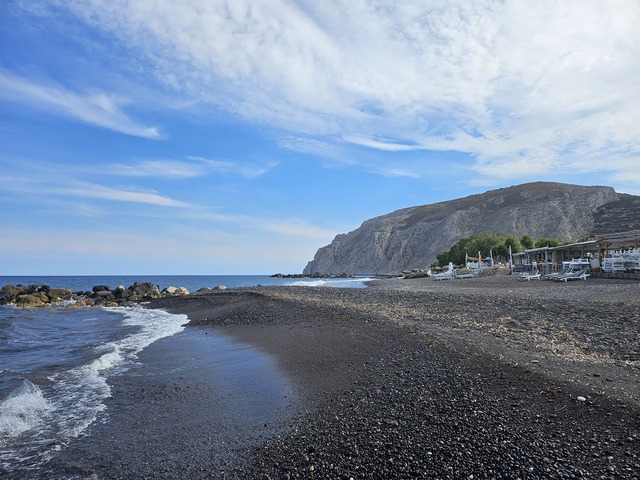
Excavations of Akrotiri in Santorini
Akrotiri is an archaeological site that offers a fascinating insight into the ancient Minoan civilization. Similar to Pompeii, this city was preserved under volcanic ash. Here you can:
- Explore the ruins: Walk among the ancient structures, including houses, shops, and sewage systems, showing a high level of development.
- Visit the museum: The Museum of Prehistoric Thera in Fira houses artifacts found in Akrotiri, including frescoes and pottery.
Fira to Oia Hike – Santorini
This scenic trail of approximately 10 km offers spectacular views of the caldera and the Aegean Sea. During the hike, you can:
- Enjoy panoramic views: Along the way, you’ll find many points where you can stop and admire the landscape.
- Pass through Imerovigli: This village, known as the “Balcony of the Caldera,” offers some of the best views on the island and is a good place to take a break.
- Take photos: The route is full of photo opportunities, from stunning views to charming villages.
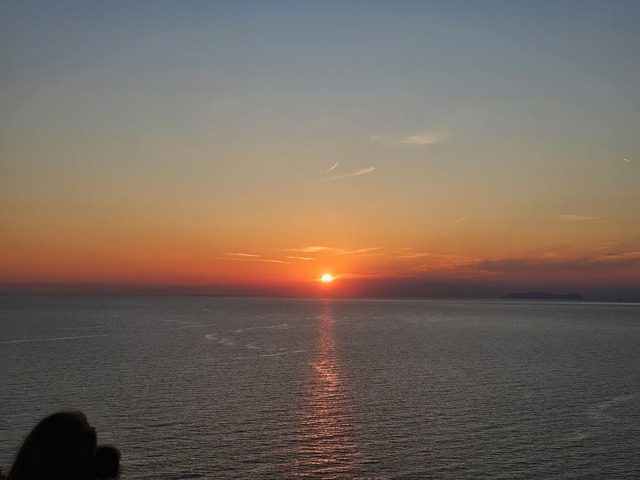
Wineries and Wine Tasting in Santorini
Santorini is famous for its wine, especially Assyrtiko. You can:
- Visit local wineries: Many wineries offer tours and tastings, where you can learn about the winemaking process and sample different varieties.
- Taste local wines: In addition to Assyrtiko, try other wines such as Nykteri and Vinsanto, a traditional sweet wine from Santorini.
Museums in Santorini
Santorini has several museums worth visiting, such as:
- Archaeological Museum of Thera: Located in Fira, it houses a collection of artifacts from the island, including pottery, sculptures, and objects from the Bronze Age.
- Wine Museum: Situated in a family vineyard, this museum offers a history of Santorini’s wine and an insight into traditional winemaking techniques.

Practical Tips for your visit to Santorini
- Best Time to Visit: From May to October, with warmer weather and less rain. July and August are the busiest months.
- Appropriate Clothing: Bring light clothing, a hat, sunglasses, and sunscreen. Don’t forget a light jacket for cooler evenings.
- Currency and Cards: The currency is the euro. Credit cards are widely accepted, but it’s useful to carry some cash.
In conclusion Santorini is an island that captivates with its beauty and charm. From its volcanic landscapes to its unforgettable sunsets, every corner of this island has something special to offer. Plan your visit and let yourself be enchanted by the magic of Santorini.
